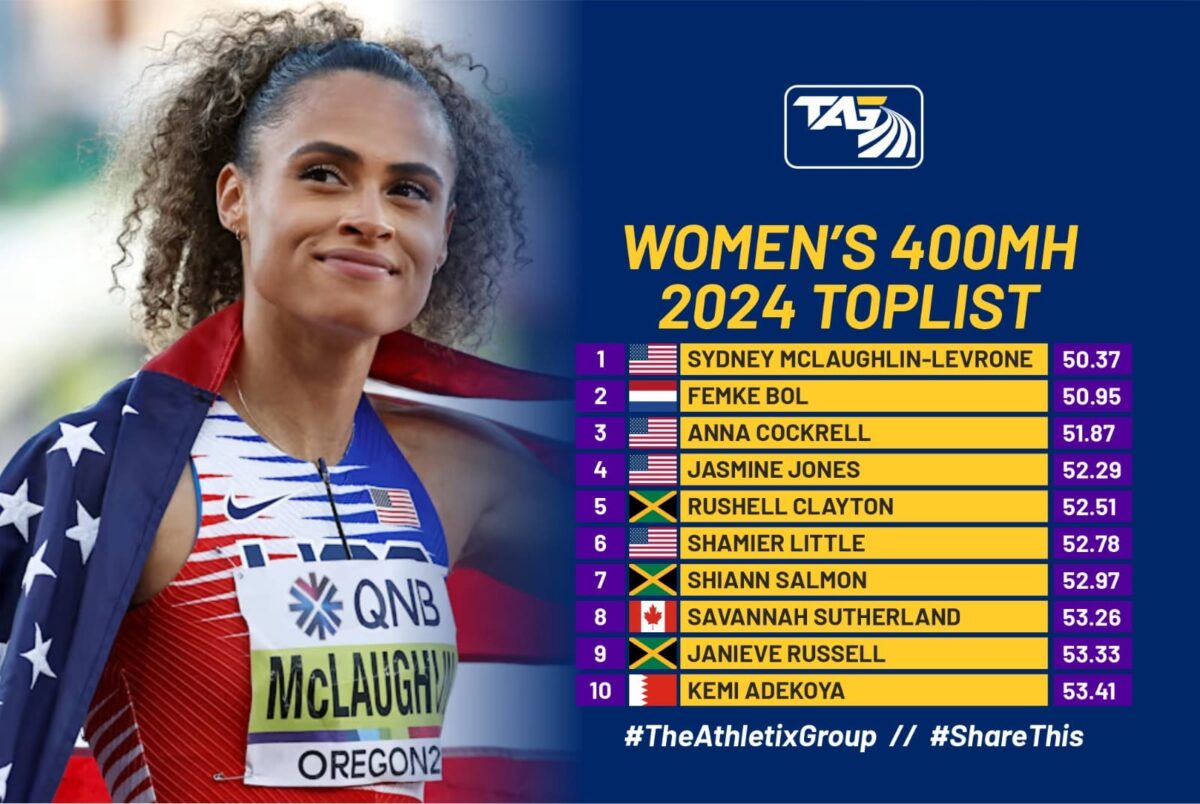
Predicting the Rangers’ Place in the Metro Division in 2025-26 – The Hockey Writers New York Rangers Latest News, Analysis & More
August 5, 2025
Source: C’s minority owner buying Sun for $325M
August 5, 2025
Keeping Pace: A Marvelous Day At The Races originally appeared on Paulick Report.
Lord knows, I have written my share of negative, pessimistic things about the Standardbred industry in the past few years. Today, I come bearing nothing but praise. Every year, the sport gathers at The Meadowlands in New Jersey, just across the river from Manhattan, to put on its most important race. Every year, the harness horse community prays that the racing will be good, the surface safe, the crowd excited, and the spectacle grand. Most years, fans and insiders alike come away having a thoroughly enjoyable time. This year exceeded those lofty expectations. The racing was great, the place packed and the on-track vibe, as the kids say, was immaculate. One loyal Keeping Pace reader wrote to tell me it was the best day of the races, anywhere, in many years.
In short, it was an afternoon entirely suitable to the centennial edition of harness racing’s biggest race. On the undercard, some favorites won and some lost. The Hambletonian Oaks, the filly counterpart to the Hambletonian, was won by Conversano, under the hand of a catch driver from Canada who had no idea he’d be in the race last week. The Hambletonian itself, the 100th edition for $1 million, was won by Nordic Catcher S, a trotting colt whose dam was sired by the great pacing legend Somebeachsomwhere. The horse lowered the stakes’ record with a win over a few nice colts that took more money than the winner did. Who owns Nordic Catcher S? The sport’s leader trotting trainer, Ake Svandstedt, and the track’s owner, Jeff Gural.*
Young fans getting a close-up look with a horse at the Meadowlands on Hambletonian day
Rachel Ryan/Meadowlands photo
The day’s success wasn’t because of some big change in how Meadowlands Chief Operating Officer and General Manager Jason Settlemoir and his staff approached the big day. It was a multitude of little things. I am sure that shit happened that wasn’t supposed to happen. It always does. But the weather was beautiful, the stands were packed and the apron was filled. At one point, drivers tossed T-shirts to the crowd in a joyous moment that would have been unthinkable to the hardboots who ran harness racing for so long. Yes, yes, the horses are the stars but the top drivers, much more so than the top trainers, are perfectly equipped to market the sport to a young generation of people who are, at the very least, racehorse-curious.
The good vibes went right down seeing the great Market Share, the former Hambletonian champion, back on the track more than a decade after his victory looking boffo during his circuit of honor, and a very good interview of Gural by the Big M’s Dave Little, who pressed his boss for details about Gural’s eternal hopes of bringing a full casino to the Big M. Gural was candid about the Meadowlands’ operating losses this year, brutal in his assessment of the way the Standardbred industry has devolved over the past few decades, but surprisingly optimistic about the track’s future tied to a state referendum that could, at long last, deliver a casino to the virtual doorstep of New York City. He sounded chipper even before he won the Hambletonian!
Soon, New Jersey voters will end the suspense about the future of the track and, one could argue, the future of the sport as we’ve known it. If Gural is right and voters endorse a full casino at the Big M, it won’t just bring hundreds of millions in gaming revenue to the Garden State, it will also usher in a new era at the old track. Bigger and better purses. More stakes races. More marketing and promotion. A real shot in the arm to an industry, especially in the northeast, that really needs one. I have argued in favor of a full casino at Meadowlands for more than 15 years. It’s crazy that state lawmakers haven’t figured out a way around the Atlantic City lobby to make it happen until now. It’s crazy that New Jersey has tolerated for so many years seeing all those Garden State license plates at New York race tracks.
But I digress. This is not the time to kvetch about what was. It’s a moment to appreciate how well the industry pulled it all off on Saturday. Even the pre-race promotional videos were great! The question now is how to sustain the vibe, the energy, the moment for the rest of the stakes year as the major stakes action shifts west, to Pennsylvania, Ohio, Indiana, and Kentucky. The bigger question is whether all or at least most of the good folks who came out for a day of racing in East Rutherford on Saturday will remember what a good time they had when it comes time to check off that crucial ballot initiative that’s coming down the pike sooner rather than later.
Call and response
After we posted the Keeping Pace column on another hidden-ownership case in harness racing, I heard from a prominent Standardbred horseman who argues that I am being too harsh on the United States Trotting Association and the work of its new investigative arm, the Standardbred Racing Investigatory Fund. After all these years of calling for more racing integrity, my friend chided me, I am now too quick to criticize the USTA and SRIF for the flaws in its investigative work that is, after all, holding people accountable for integrity-related conduct. I should better appreciate the fact that there is any enforcement at all, my friend says.
Another Keeping Pace reader was even more blunt: Of owner and breeder Eric Cherry’s troubles with the USTA and the SRIF, the reader wrote: “The guy had numerous broodmares with [disgraced Standardbred owner and breeder Nick] Surick for years post indictment. He deserves no platform. He got off easy.” Of my column, the reader wrote: “Your grandstanding for Eric Cherry is ridiculous. It took me 5 minutes on Pathway to find his ‘I was unaware’ defense to be complete crap.” But some Keeping Pace readers, without excusing Cherry, blasted the USTA and the SRIF for focusing on broodmare registrations instead of on doping and beard cases.
I get the frustration among Keeping Pace readers who think I let Cherry off too lightly or that I have somehow defended shady registration and hidden ownership problems. But I didn’t and I haven’t. Just because the SRIF is screwy doesn’t mean that Cherry is a helpless victim here. He knew or should have known that owning in partnership with Debbie Surick meant some sort of connection with Nick Surick. And, like many others, he should have known to end his business relationship with the Suricks the moment Surick was accused by the feds in early 2020 of “obtaining, shipping and administering misbranded adulterated” performance-enhancing drugs.
(article continues below)
I am glad we were able to let him share his side of the story a few weeks ago. Cherry shared it again last week in an episode of the Harness Racing Alumni Show. I find it fascinating that the USTA retaliated against him for going public with his criticism by releasing the investigative report into his case. You can read it here. Some parts are clearly embarrassing to Cherry. Some parts are clearly embarrassing to the USTA. A good prosecutor could use the facts in the report to incriminate Cherry. A good defense attorney could use the facts in the report, and the process by which those facts were obtained, to exonerate Cherry. Why did the USTA and SRIF not release the report when announcing the punishment, the way state and federal judges do?
Through the SRIF, the USTA is expanding its enforcement operations as a way to compensate for the failure of state racing commissions to do more to clean up the sport. I have no problem with that. It’s ironic, actually, that the USTA is highlighting the problem with state commissions at the same time its leaders are pitching a disastrous new federal law that would cement into place the power of state commissions. Anyway, I have no problem holding some of the industry’s most significant stakeholders accountable for sloppy registration work or, as the USTA claims, deceptive practices. The signal that portrays – that even the mightiest in the sport have to play by the rules – is a powerful signal to send. We should all be able to agree about that, right?
My problem with all that is that the USTA and SRIF have distorted that signal with the way the investigations have proceeded. First, USTA President Russell Williams has an intractable conflict of interest that cannot be downplayed or dismissed. He’s the owner of the biggest breeding farm in the sport, Hanover Shoe Farms, and the USTA, through the SRIF, has gone after two of Hanover’s major breeding competitors, first Diamond Creek and now Eric Cherry. Imagine an investigation orchestrated by Ford Motor Company that targets GM and Chrysler? The USTA denies that Williams is in any way involved in the SRIF. Do you believe that?
There are other problems with the SRIF and its oversight by the USTA. It’s not nearly as transparent as it ought to be. There has still been no credible explanation for why some people who did business with Surick avoided punishment while others, like Cherry, had to pay the piper. As I have reported before, the SRIF wanted to punish other harness horsemen when it punished Diamond Creek earlier this year but what the USTA calls (in true Soviet-style jargon) an “Ad Hoc Special Investigative Committee to the Executive Committee of the United States Trotting Association” took those names off the list of those who would be sanctioned. Why?
Another question raised by the Cherry case is what, exactly, the USTA and SRIF are targeting. Is hidden ownership itself a problem? Or is it hidden ownership with people who are no longer licensed by the USTA? If it’s the former, I’d like to know whether Hanover Shoe Farms has been investigated by the SRIF for hidden ownership in its broodmares and yearlings. If it’s the latter, why was Surick’s USTA membership allowed to lapse on Sept. 30, 2021, roughly 18 months after Surick was indicted? Wasn’t a federal indictment – predicated on sworn testimony – good enough to trigger an immediate suspension? And how exactly did the USTA prove that Cherry and others knew that Surick was unlicensed? I am still a little foggy on that part of the story.
The truth is that one can think little of the way in which Cherry handled the situation and at the same time think little of the way the USTA is prioritizing these investigations. I am told that there are beard trainers operating in Pennsylvania and New York, some of whom have returned to the industry after lengthy suspensions. I don’t know if that’s true but these claims strike at the heart of integrity issues in racing and are far more important than who is listed as an owner on a broodmare that will never race. Is the SRIF tracking down the paper trails in these cases or is it just focusing on the low-hanging fruit that cases like Cherry’s represents? The fastest way for the SRIF to gain credibility with USTA members is to tackle the big problems.
Here’s the postscript. After threatening to sell his hundreds of horses in protest of his punishment, and after telling me he hoped the USTA would rescind its fines, Cherry wrote a letter to Harness Racing Update last week in which he said: “I was both surprised and hurt by the [USTA’s] findings, but after numerous calls of support from people in the industry and consultation with my wife, Lisa, I have decided to put this incident behind me and continue in this industry that has been such a large part of my life.” That’s a good thing. One of Cherry’s many legacies to the sport will now be an increased awareness in broodmare registration.
Notes
Now comes the hard part. Everett Dobson, the new chairman of The Jockey Club,* said all the right things last week in his inaugural address. It’s clear that he is aware of many of the major problems facing U.S. racing, which at least sets him apart from the leaders of some horsemen groups. “The Jockey Club will continue to strongly support” the Horseracing Integrity and Safety Authority, Dobson said, “and we need look no further than the news we all read this week from Thistledown [Racino, in Ohio], where concerns about safety prompted HISA to decisively step in. You can expect us to advocate for HISA’s mission, while also serving as a voice of reason concerning the cost to the industry.”
Dobson’s challenge, like the challenge of all of his predecessors, will be to turn his good intentions into reality. That’s the tough part about bringing together the disparate elements of an industry, many of whom are intensely competitive with one another. There are the sport’s existential problems – like reversing the downturn in breeding numbers – and there are the sport’s transitory problems – like ensuring the future of racing in California and other jurisdictions imperiled by the sport’s natural contraction. Dobson’s background in business and professional sports should help him market an amazing sport to a nation not quite sure what to make of it in an age of “social contracts” and countless other wagering options.
(Disclosure: The Meadowlands Racetrack is a sponsor of this column and Gural and I own a few horses together. The Jockey Club is also a sponsor of the Keeping Pace column).
This story was originally reported by Paulick Report on Aug 4, 2025, where it first appeared.







